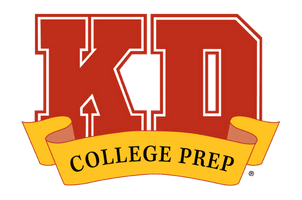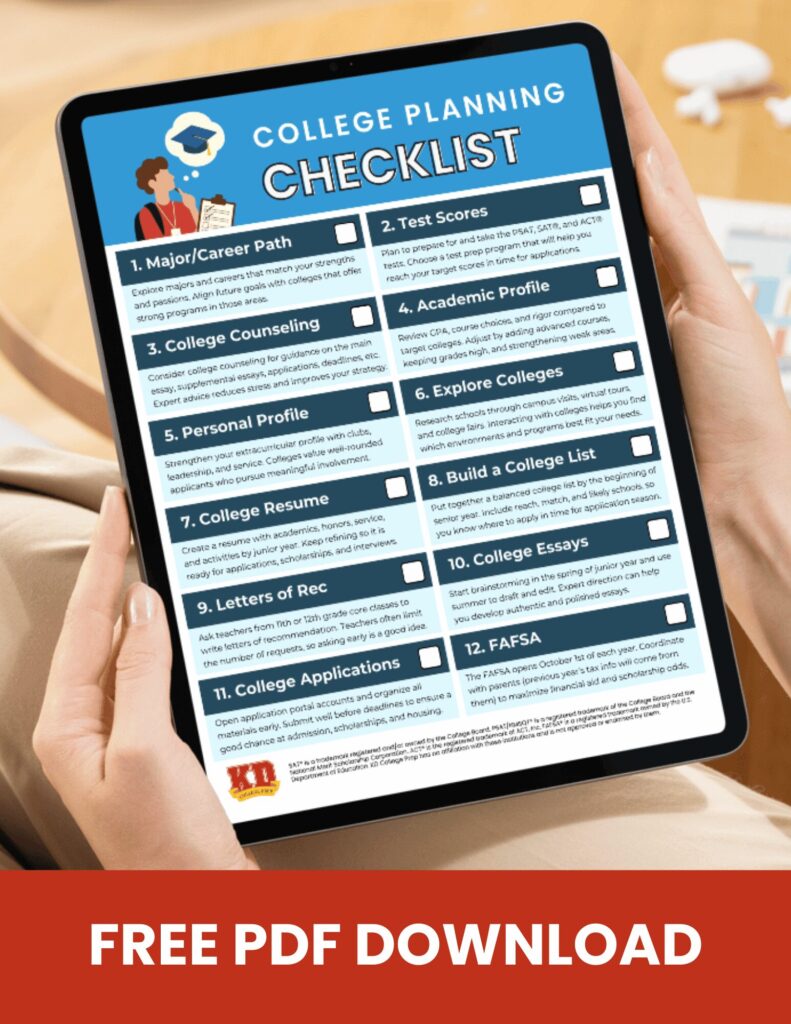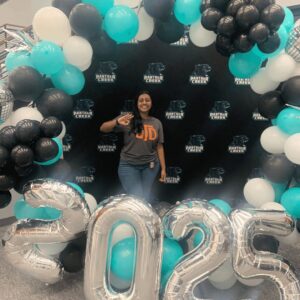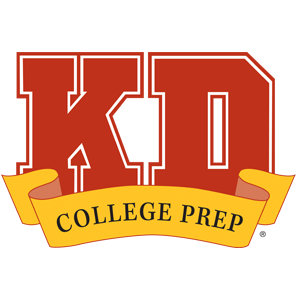The college admissions process is a marathon—not a sprint—and the earlier you start the process, the better prepared you’ll be. In fact, you can start working on this college planning checklist as early as 7th or 8th grade, although most steps will be completed during high school.
Remember, the college planning process will look different for every student. For example, one student may spend hours every weekend studying for the PSAT, SAT®, or ACT® test because his or her college or scholarship goals require elite test scores. Another may need to dedicate more time toward athletic training and sports because the dream is to play for a D1 team. But in general, there are specific items and steps that every student should take to maximize their odds of attending a dream college.
This college planning checklist will explain the main components of the process and give tips for how to help students find success along the way.
College Planning Milestones: The 12 Main Steps of the Process
1. Major/Career Path
Some students have spent years of their lives already knowing what their dream career will be. But if that’s not you, there’s no need to fret. You don’t need to have it all figured out right now, despite the many well-meaning adults in your life who constantly ask, “So, what do you want to be when you grow up?” However, it is a good idea to start exploring the possibilities before you get to college so that you can choose a major aligned with your interests. (But remember, there are scholarships tied to certain majors, so knowing early on can benefit you.)
First, take an Aptitude Assessment to get a general sense of the types of careers you might be well-suited for. Then, do some research on the careers that appeal to you. You can start by checking out the U.S. Bureau of Labor Statistics’ (BLS) Occupational Outlook Handbook.
You can also chat with a college counselor to get career guidance, join student organizations relevant to careers that interest you, and pursue internship and job shadow opportunities for careers you are contemplating. Then, start seeing which colleges offer majors that align with those career goals.
2. Test Scores
While you’re developing a shortlist of potential college majors, you’ll also accumulate a list of possible colleges. (There are several factors that go into building a college list, but an important one to consider is the academic strength and reputation of your chosen degree program.) As you explore your options, research the target test score ranges for those schools. They’re typically available on college websites.
One helpful way to start preparing for the PSAT, SAT®, and ACT® tests is to take a practice test. Some schools offer practice versions by grade levels, but access to the early tests like the PSAT 8/9™, PSAT 10™, and PreACT™ tests varies by school district. There are also a limited number of official practice tests available online.
Students can also take a free diagnostic test at KD College Prep to establish a benchmark. From here, a KD advisor can go over the results and help students build a plan for their score goals. Schedule a free consultation with an advisor to find out how to take a diagnostic test.
3. College Counseling
Navigating the entirety of the college admissions process can be a bit overwhelming, especially if you’re aiming for highly competitive colleges or are going to be a first-generation U.S. college student. If you’ve decided that you could benefit from expert guidance as you work toward your goals, it’s a good idea to meet with a college counselor.
KD College Prep’s college counseling team takes the stress out of the process, providing personalized support and honest feedback to improve the strength of your application package. We can help break down the entire process down into strategic, manageable steps, like with our APPLY NOW! Advantage Program, which offers both small-group and one-on-one support.
4. Academic Profile
Getting into your dream college requires curating your academic profile. Your college counselor can help you identify an ideal middle school and high school courses needed to meet your goals. For example, competitive colleges will want to see that you’ve been taking challenging courses, such as Advanced Placement (AP) and Honors classes. You’ll also need to ensure you can fulfill course requirements for specific degree programs or departments.
It’s a good idea to set goals for your individual class grades and overall GPA. You might also want to target a particular class rank. Re-evaluate your goals annually and adjust as needed. While you’re working on academics, build good working relationships with teachers, especially core class teachers. Be sure to ask them for help as needed.
5. Personal Profile
The next item on your college planning checklist is to curate your personal profile. That is, look beyond the classroom when turning yourself into a more enticing applicant. Look for clubs, sports, and other student organizations that interest you. It’s more helpful to stick with a few extracurriculars over multiple years than to participate sporadically in a dozen of them.
In addition, look for community service organizations to join and regularly volunteer for causes that you’re passionate about. (You might even consider starting your own passion project, like knitting clothing for the unhoused in your community.) Along the way, focus on building strong relationships. As you gain experience, look for leadership opportunities.
6. College Research
By this point, you should have an idea of which colleges you’re interested in. Now, it’s time to focus more on college research, turning your general list of possibilities into a shortlist of targets. Check out college websites and social media accounts, and explore their reputations and other data on third-party websites, such as:
Be sure to explore each college’s degree options to see if the school fits into your career plans. Next, start planning visits to campuses, where you can also attend informational sessions. Attend college fairs, as well, if available at your high school or in your area. If you’re a current KD student, be sure to attend the college fairs that we offer during the spring and fall semesters.
7. College Resume
It’s common, though not universal, for colleges to require a resume as part of the application. If a college resume is suggested, but not required, it’s still a good idea to submit one. (Some college applications ask for an Activity List, which is similar to a college resume.) Start by brainstorming a list of all of your extracurricular and community activities, work experience, special skills, volunteer positions, special achievements, leadership roles, and so on.
Sort through the list to decide which items to include. Shoot for one page that highlights your most impressive accomplishments and commitments, and remember to provide detailed descriptions for your involvement in each item.
8. College List
At this point on your college planning checklist, it’s time to narrow down your list to where you want to apply. We recommend following the 3-3-3 Rule. Your list should include three reach schools (highly selective), three match schools (still selective, but a good fit), and three likely schools (for which you’re overqualified).
Every school on your list, including your likely schools, should be ones that you can see yourself attending. If you happen to not get accepted to your dream school in the reach category, or even your match schools, you’ll want to still be happy with your likely schools.
As you’re finalizing your list, it may be a good idea to collect information for the application process for each school, like deadlines, approved application portals (like Common App), required/recommended materials, number of essays, etc.
9. Letters of Recommendation
For many students, obtaining letters of recommendation is the easiest part of the college admissions process. This is because you don’t have to write them yourself. Instead, you’ll need to request them from others.
Generally, you’ll want a total of three letters of recommendation for an application (although each college will establish its own requirements). Aim for two from core subject teachers and one from your school counselor.
The most important thing to keep in mind regarding letters of recommendation is that you’ll need to request them as early as possible. Every year, teachers get overwhelmed by the volume of seniors requesting recommendation letters. We suggest requesting them in the spring of your junior year instead of waiting until senior year.
10. College Essays
These days, the number one rule of writing college essays is: Don’t use AI tools like ChatGPT. (You can read more about the “why” behind that here.) Instead, follow the time-tested process of brainstorming unique essay topics, developing an outline, and writing a compelling first sentence.
For many applications, you’ll only need to provide one personal statement of about 400 to 600 words. Some colleges may also require supplemental essays, such as an additional essay geared toward why you see yourself as a good fit for that specific school.
Start working on your essays early; you’ll want plenty of time to set them aside, reread them, and revise until they’re solid. You’ll also want other people to have time to read them and offer feedback.
Don’t forget about your scholarships. Many scholarships require an essay as part of the application process. Again, start early.
11. College Applications
By the time you reach your senior year of high school, you should have a pretty good handle on how to stay organized and on top of college application deadlines. Remember to add the deadline for each college application to your calendar. It’s best to submit your applications several days ahead of the deadlines, just in case of unexpected events like power or website outages.
Create a schedule to work on your applications so that you can have them done in time. (This is where KD’s college counseling team shines in helping hold students accountable.) You might also consider hiring an essay editor. Create accounts at the application portals you’ll need for your schools, such as the Common App, and start building out your applications and submitting them.
12. FAFSA and Scholarships
You’ll need to submit the Free Application for Federal Student Aid (FAFSA) as soon as it becomes available for each year that you’re in college. You don’t have to wait to start applying to scholarships, however. (In fact, you could have begun even before high school, as some scholarships target young students.)
You might start to receive some admissions notifications as early as December if you applied Early Action or Early Decision. Otherwise, you can expect to receive admissions decisions in March and into April. Once you’ve received all of your results from the schools you applied to, you can start to think about where you’d be the happiest.
Don’t forget to review your financial aid packages for each school. You’ll also want to compare student housing costs across different campuses.
13. (Bonus!) Final Decision
Congratulations on your acceptance letters! Now it’s time to figure out which school to attend. Making that final decision isn’t always easy. Even if you’ve had your eye on just one school in particular and you were accepted there, you’ll want to take another critical look at it.
Review the information you compiled and pay particular attention to the degree programs you’re interested in. Review the financial aid packages again. You should also check out KD’s College Decision Bracket, which helps you narrow down options March-Madness style.
When you’re ready, make your final decision and celebrate meeting this major milestone!
When should I start planning for college?
Most students begin planning for college as early as 9th grade. If you’re a high-achieving 7th or 8th grader, you can start right now. At this point, you’ll mostly want to focus on making yourself a more attractive applicant, such as by preparing for admissions tests, participating in extracurriculars and service projects, and getting good grades.
When should you start looking for scholarships?
It’s never too early to start looking for scholarships. There are scholarship opportunities available for children in preschool and kindergarten, as well as elementary and middle school. If you start applying to scholarships as early as middle school, you might not need to spend as much time on it as a junior or senior, which frees up more time for college applications.
That said, if you’re currently a junior or senior and haven’t started yet, don’t panic. You still have time, and rest assured that plenty of other students are in the same boat. Just get started as soon as you can and talk to a college counselor if you need a plan.
How can parents participate in the college planning process?
For parents, it can be tricky to walk a fine line between being supportive and encouraging, yet not overbearing and micromanaging. Open communication is always ideal. Have a chat with your student and let them know directly that you’re there to help and provide guidance as needed, and all they have to do is ask. If your student struggles with self-motivation, you might need to be a little more hands-on, but it’s still important to emphasize that the decisions (where to go, what to study) are ultimately up to them.
Some tasks that you can directly participate in include:
- Providing transportation as your student participates in community service projects, extracurriculars, and part-time jobs
- Having honest conversations about the financial resources available for college (and reminding your student that, in addition to tuition, there will be housing, textbooks, and other costs)
- Signing up for a test prep program and a college counseling program
- Arranging campus visits and participating in informational sessions
- Proofreading your child’s applications and essays
- Filling out the FAFSA
- Acting as your student’s non-judgmental confidant as he or she tries to decide where to attend school
Need help with college planning?
KD College Prep is here to help you navigate each step of the college admissions process. In addition to our test prep programs to help you boost your test scores, we offer college counseling services that take the stress out of the admissions process. Request a free consultation today.















































